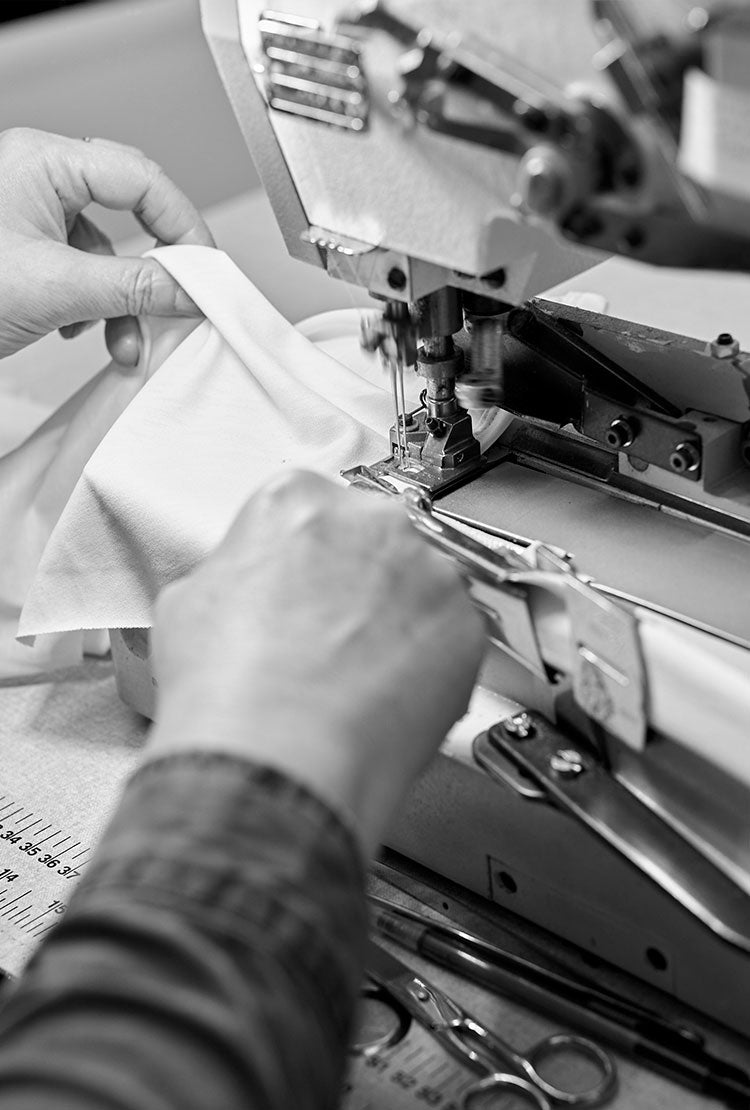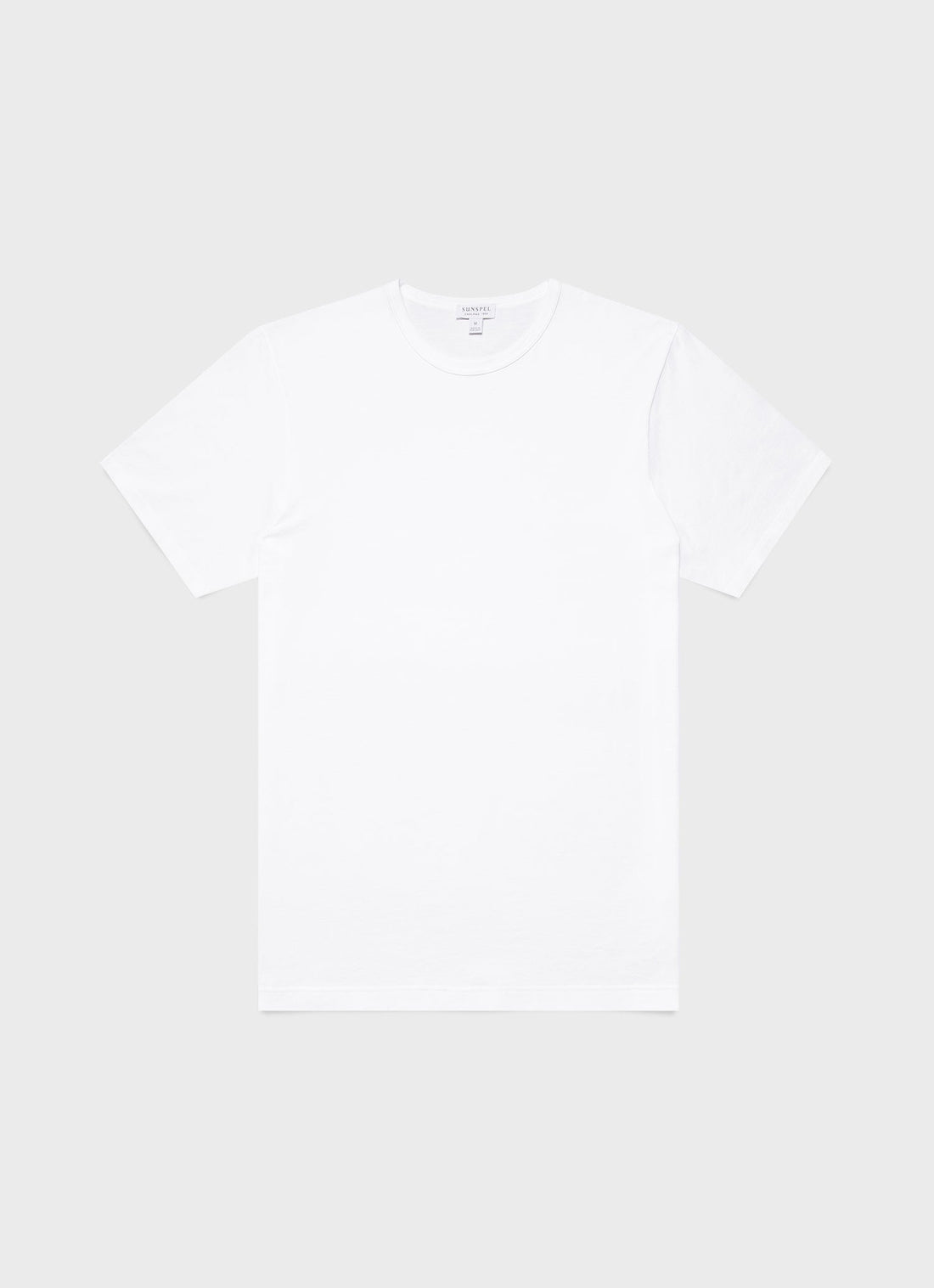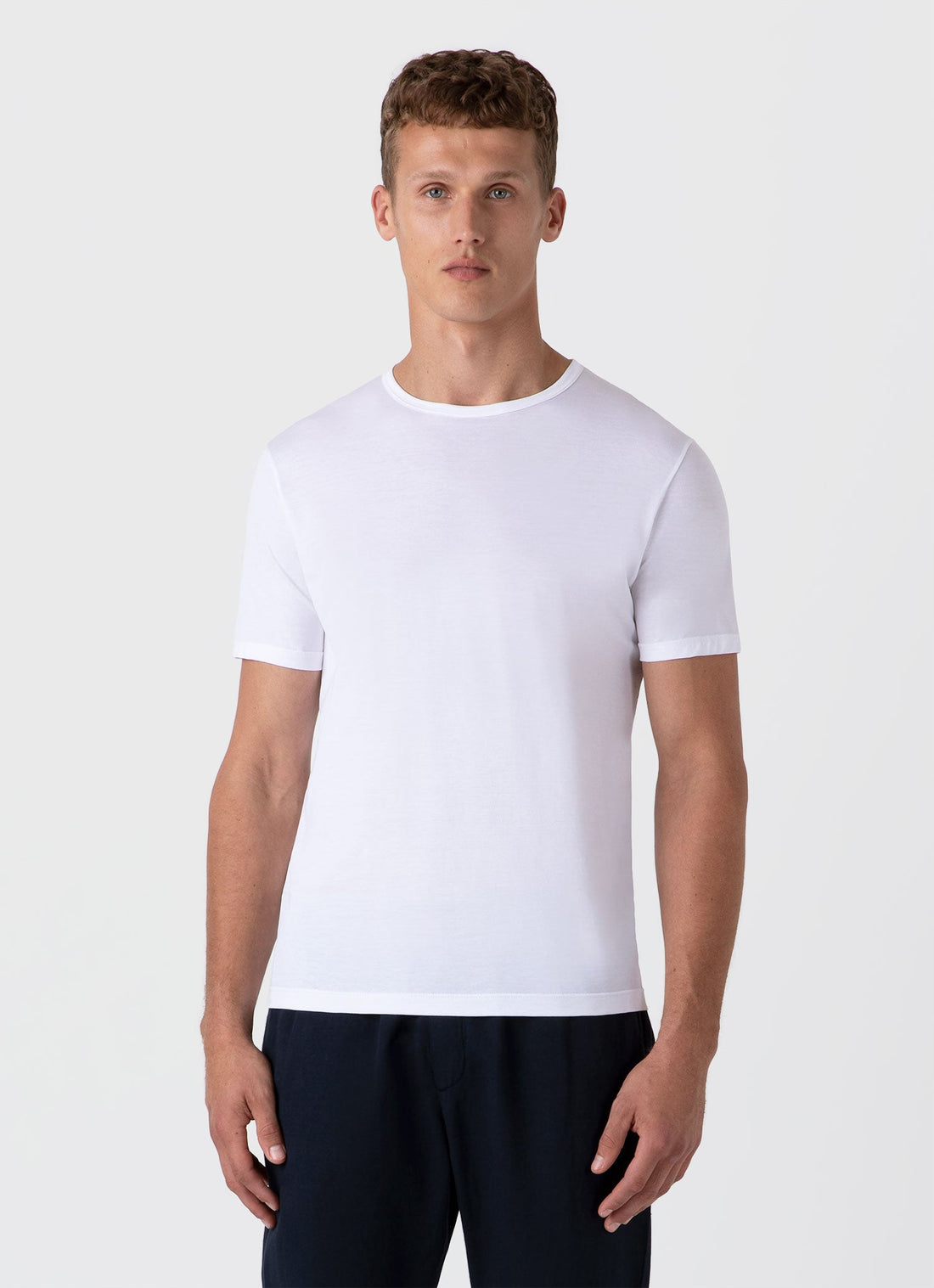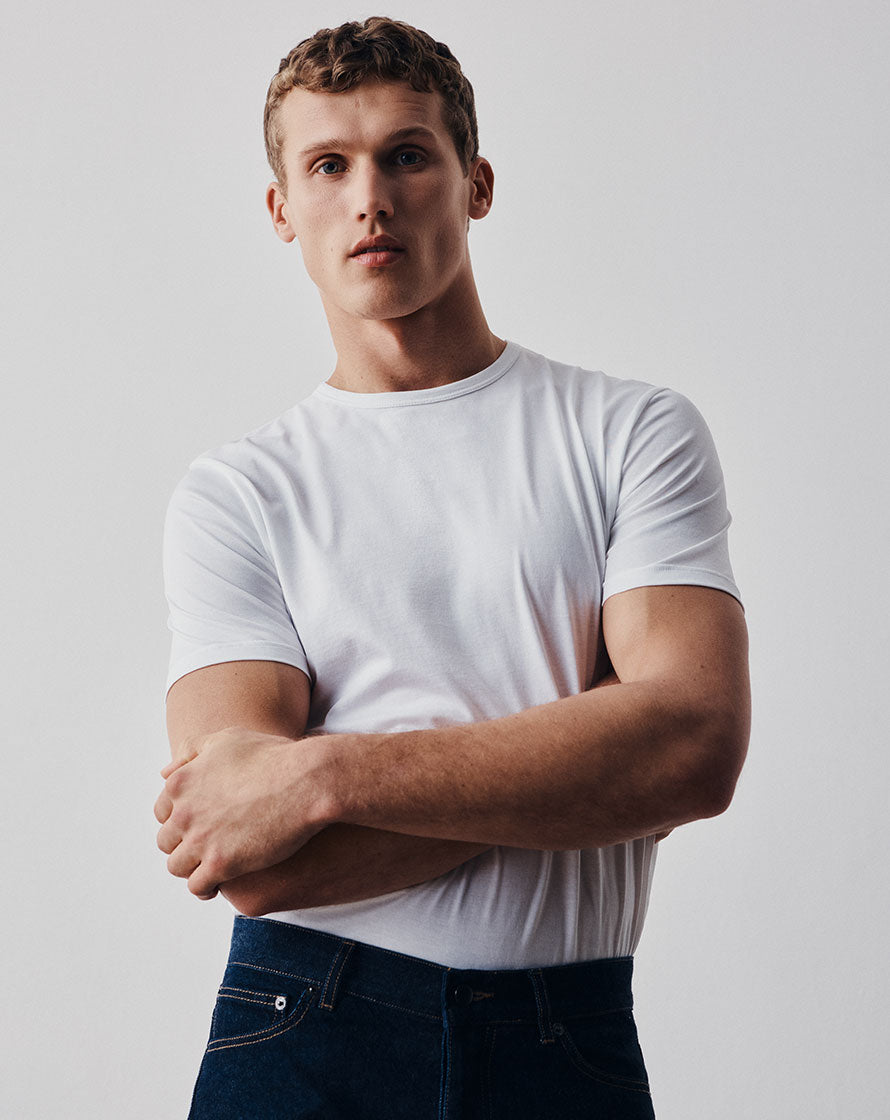Friends of Sunspel: Luke Eastop
The Margate-based potter, with his clean organic lines and muted tones, has inspired a new colour palette for Sunspel this season. We talked to Luke to learn more about his process, creative influences and the fascinating friction between form and function.

The new Sunspel collection is inspired by the earthy tones of your work. Is there a synergy between yourself and Sunspel?
Yeah, there's a shared ideology of just very simple forms. And then actually, the detail or the decoration, as much as there is, is in the material itself. That’s what my work is about and just asking that question of how simple can you make this and how high-quality can it be? What else does it need? I always find it hard to justify additional intervention or decoration.
Have you always worked in this way?
In terms of ceramics, it’s always been like this and I think it maybe comes from being a graphic designer for quite a while, and then I was a chef for five years leading up to starting ceramics. So, I think both of those two things probably had an influence on that; the idea of working directly with the material itself. The kind of cooking I really enjoyed was ingredients-led. What I’m saying about decoration and not making interventions is that there has to be a reason for it.

|

|
Can you explain more about your technique?
All my work is unglazed on the outside, so I'm mixing different clays together, mixing metal oxides – iron, manganese, cobalt – into the clay itself, which gives you colour, or mixing different clays together for structural reasons or texture or finish. That's the foundation of my practice. But before I figured that out, I started by making glazes. However, I wanted quite a naturalistic look; I didn't want high gloss or a traditional finish. After some, mostly fruitless, experimentation, I decided to try working directly with the clay. I wanted to get a terracotta-looking finish but not orange like a flower pot – I wanted it to come out deep red and robust. Terracotta has quite a low firing temperature because of the iron in it. So, I mixed some white clay – that you are meant to fire high – with terracotta, in 10% increments, and made a series of test pieces. Everything that came out was usable, they were all interesting. It was the process that led me there, so they all had a reason to exist. That was the turning point. The obvious thing was to work with the clay itself.
You have a very specific approach to the shapes of your ceramics. Could you explain your process and how you decide what colours work with particular shapes?
Before I sit down at the wheel, I make an aesthetic decision about what I want the pot to look like when it's finished. I like to come to the studio in the morning and then decide, maybe do a couple of little sketches, just to get something out of my head. I quite often have forms in mind or I think about them on the bus, and then I think about which colours will work with it. Strangely, over time I've noticed various rules that I have. So, generally, I make really bright things small. I don't want to make really big, brightly coloured objects. Or only certain shapes, I think, work in blue. I don't know why exactly but it feels like there’s some internal sense to it.
I'm influenced by industrial objects but I also take cues from nature. So some of my pieces are chimney-shaped, for example, and some of the more organic forms have some key straight lines. I'm interested in the geometric ideas that underpin a form, and where that crosses over into shapes that exist in nature, and what we appreciate as beautiful, or balanced.

How long have you been making ceramics and how did you get into it?
My grandfather [Geoffrey Eastop] was a ceramicist and he taught my dad, so I've grown up with it. I was surrounded by the idea that you can decorate your environment with these objects. But I didn't really make any ceramics while my grandfather was around. My dad and I started using my grandfather’s studio after he passed away and we would have these amazing weekends, just me and my dad, in my grandfather's studio in a little village called Ecchinswell. We were trying to figure out what to do with his house and studio, to maybe sell it, but it was sitting empty and it was everyone's favourite place. It was a real hub for the family and a very special place. I was a bit bored in London and I thought, why don't I just move into the cottage and I can make pots and look after the house. So that's what I did. I was very lucky in that I had a fully functioning studio with 60 years’ worth of my grandfather's things; every bit of equipment I'd need, all of his notebooks going back to the 1960s, a house full of pots from other famous British potters, no distractions – and no rent to pay! That’s how I started and how I was able to get off the ground quite quickly.

|
 |
If you could own any piece of art or sculpture, what would it be and why?
Some of my favourite pieces of art are a series by Cy Twombly where he used the names of Greek gods. I went to see one of his shows at the Serpentine Gallery about 20 years ago. I went on my own and I had a very emotional moment where I felt like I understood. The pieces felt quite brazen – but there was a moment where I felt like it came together, a feeling of depth and humanity. But the question I’m interested in is, at what point in human civilization and the history of ceramics, did someone first think to elevate something above its function? The first object that managed to transcend its original intended function: that’s what I’d have.

|

|




































